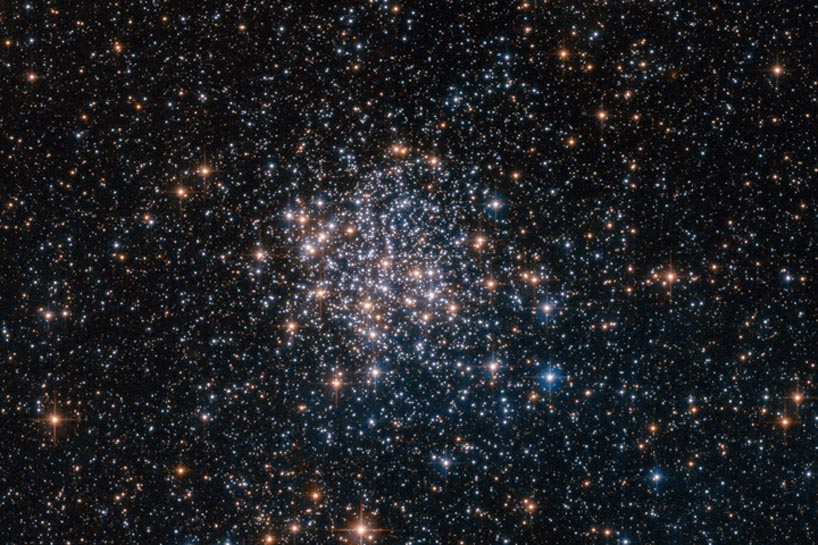
Globular Cluster
RA 5h 9m 20.22s Dec -68° 50' 55.92"
Dorado
140,000 light years
10.4
2.44 x 1.52 arcminutes
North is 64.0° left of vertical
ESA/Hubble & NASA
June 20, 2016
ABOUT THIS IMAGE:
This NASA/ESA Hubble Space Telescope image shows the globular cluster NGC 1854 (aka NGC 1855), a gathering of white and blue stars in the southern constellation of Dorado (The Dolphinfish). NGC 1854 is located about 135,000 light-years away, in the Large Magellanic Cloud (LMC), one of our closest cosmic neighbors and a satellite galaxy of the Milky Way. It was first discovered by James Dunlop on August 2, 1826.
The LMC is a hotbed of vigorous star formation. Rich in interstellar gas and dust, the galaxy is home to approximately 60 globular clusters and 700 open clusters. These clusters are frequently the subject of astronomical research, as the Large Magellanic Cloud and its little sister, the Small Magellanic Cloud, are the only systems known to contain clusters at all stages of evolution. Hubble is often used to study these clusters as its extremely high-resolution cameras can resolve individual stars, even at the clusters’ crowded cores, revealing their mass, size and degree of evolution.